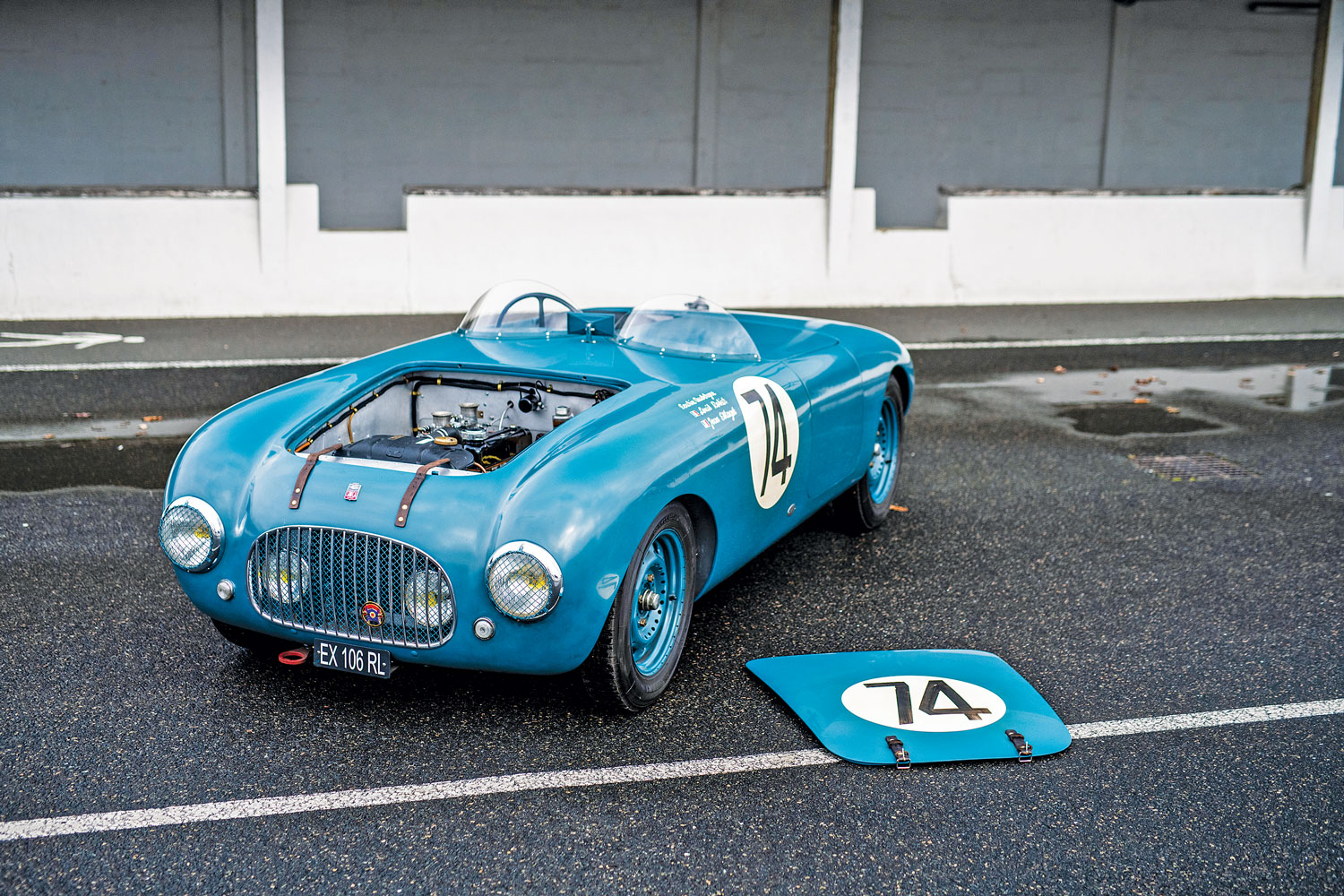Chassis Number: 145063
In the years following World War II, the Simca Eight chassis was a popular choice among independent racing-car constructors in France, and this example is the work of Jean Estager, an established driver and friend of Formula One competitor and Le Mans winner Louis Rosier.
The 1,089-cc, 4-cylinder overhead-valve engine was prepared by Simca specialist Roger Deho, and Estager’s car was fitted with Deho-Dubonnet aluminum shock absorbers, an aluminum steering box and ventilated aluminum-alloy drum brakes. For the sporting coachwork, Estager turned to Carrozzeria Motto in Turin, a company with extensive experience in the construction of barchetta-type competition bodies for the likes of Alfa Romeo, Fiat and Cisitalia. For Estager, Motto’s craftsmen hand-built a simple, streamlined, 2-seater body in aluminum, very much in the contemporary idiom.
In 1951, Estager sold the car to Max Deblon. The Simca was entered in that year’s Le Mans 24 Hours race for Deblon/Daguet (competitor number 74) but did not make the start. Despite this setback, the car participated in various races, most notably at Montlhéry in 1953. Estager’s one-off then disappeared from view until the 2000s.
The current vendor, a prominent collector of French cars, commissioned a complete professional restoration, during which an engine was rebuilt and modified for racing. Bored out to 1,220 cc, it is fitted with two Solex 32 PBIC carburetors on an Abarth manifold (the aluminum sump and oil filler are the original Deho components). As a record of the car’s condition when rediscovered, the interior side of the driver’s door was left unrestored. The restoration was completed circa three years ago at a cost of some €100,000.
Simple in design, light in weight and easily maintained, this unique Italian-bodied French barchetta represents an ideal entry into historic sports-car racing and is a guaranteed head-turner at any event. The original type 1,089-cc engine is included in the sale, and the car is offered with a French carte grise.

